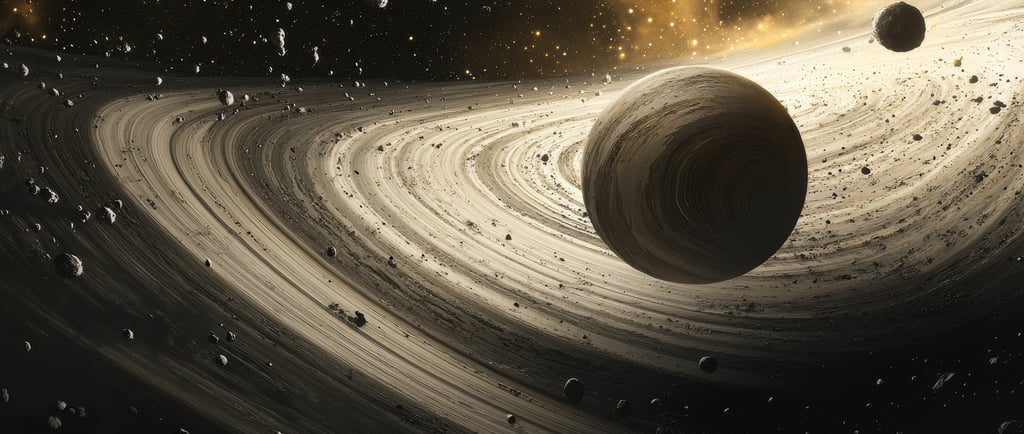The massive rings in Super Saturn J1047b


Introduction to Super Saturn J1047b
In the vast realm of exoplanetary systems, Super Saturn J1047b stands out as a striking example of the diversity of planetary bodies within our universe. Discovered through advanced observational techniques, this unique gas giant has garnered considerable attention from astronomers and space enthusiasts alike. Its impressive characteristics and intricate features make it a subject of ongoing research and fascination.
Characteristics of Super Saturn J1047b
Super Saturn J1047b is notable for its extraordinary ring system, which rivals that of Saturn, hence its name. The planet boasts an array of rings composed of ice particles, dust, and rocky debris, extending far into its surrounding environment. The structure and density of these rings contribute to various phenomena observed in its vicinity, such as unique light patterns and atmospheric effects. The planet's size is another remarkable feature; being classified as a super gas giant, J1047b is significantly larger than our own Jupiter, with a mass over three times that of Saturn.
Scientific Implications and Future Studies
The discovery of Super Saturn J1047b opens new avenues for understanding planet formation and evolution. Its unique attributes prompt questions regarding its origin, the dynamics of its rings, and the potential for complex weather systems within its atmosphere. Ongoing studies aim to analyze the atmospheric composition and thermal structures, which may reveal insights into the processes shaping gas giants in distant star systems. With advancements in telescope technology, scientists are eager to conduct further explorations of J1047b, which may illuminate the mysteries of the universe and the possibility of life beyond our solar system.
